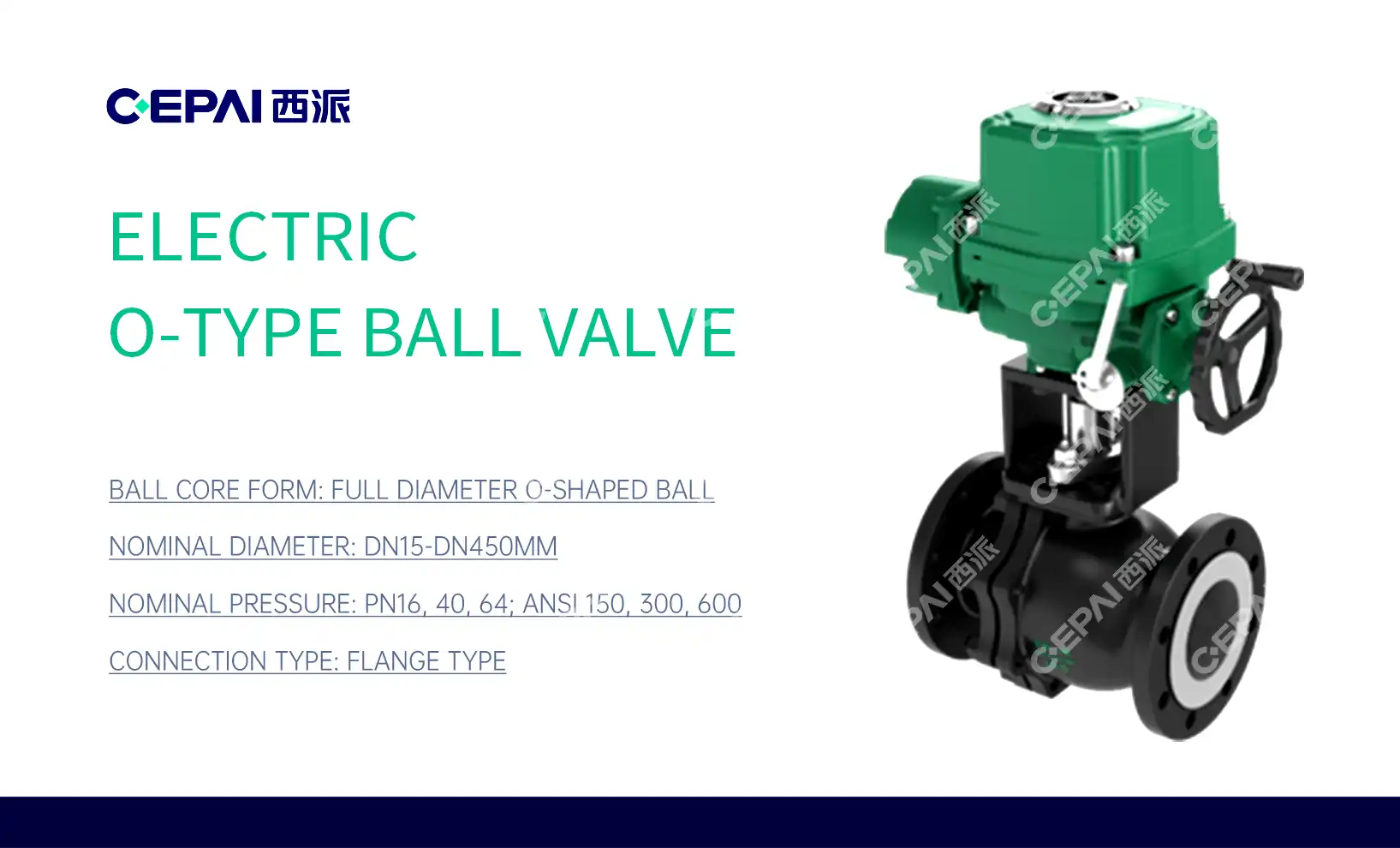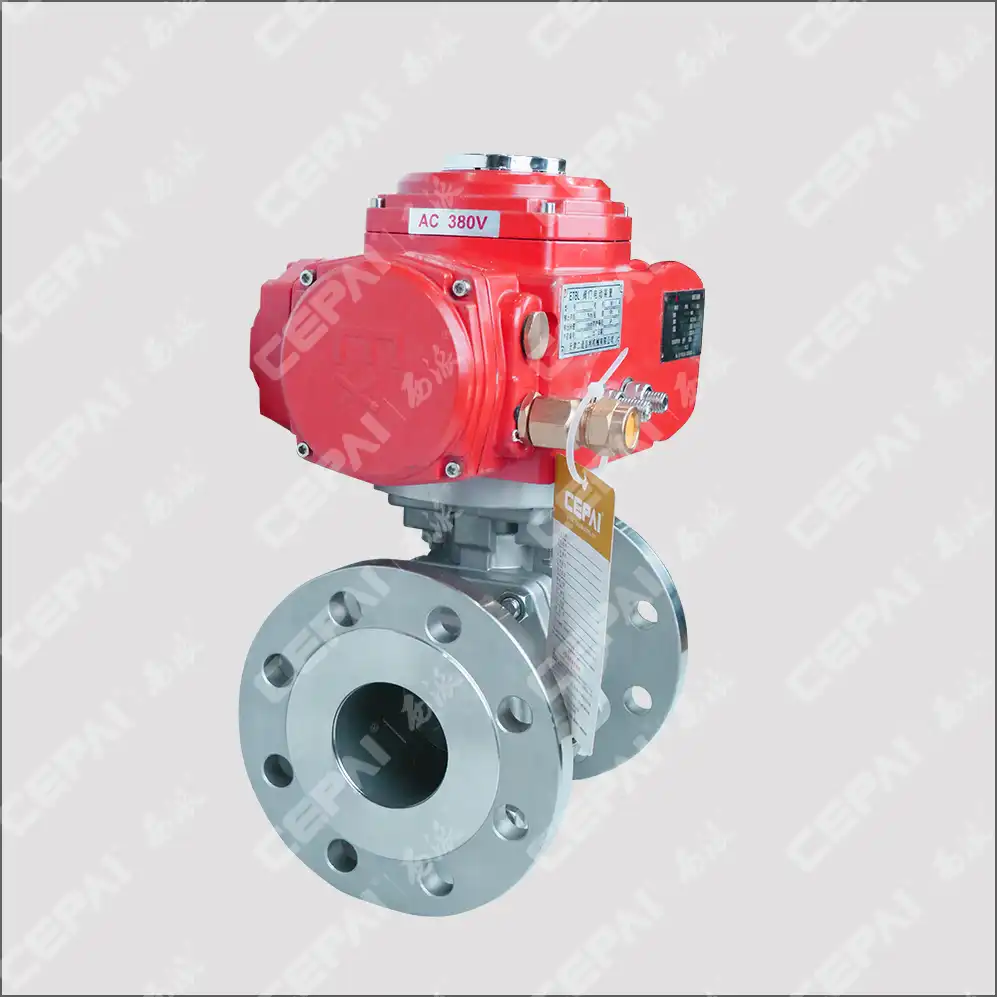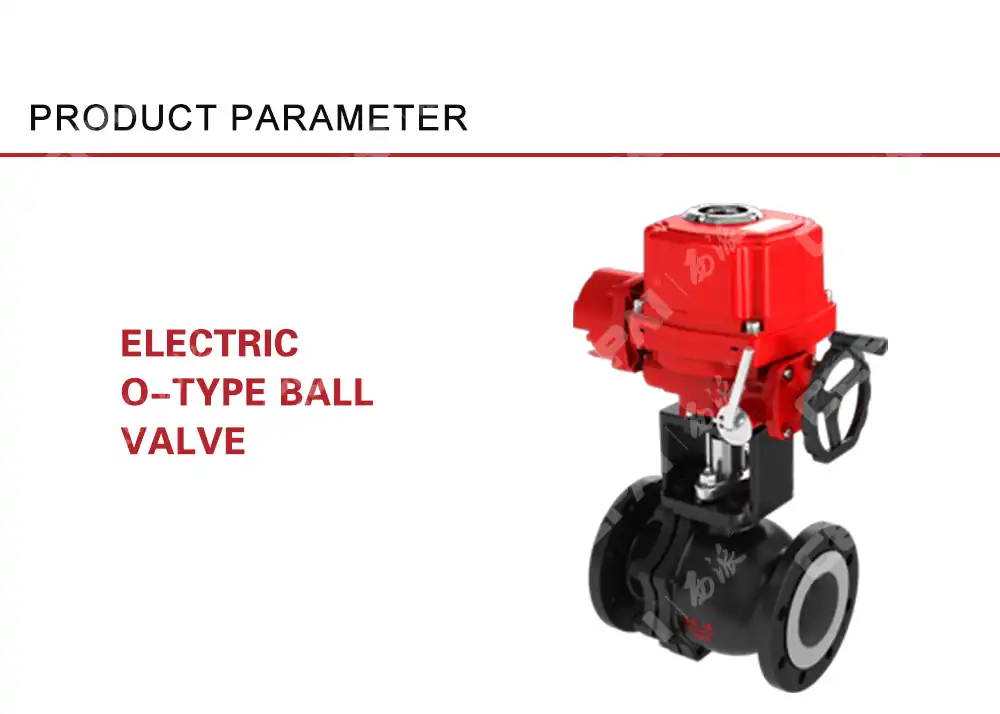Exploring Different Actuator Types for Electric Ball Valves
The selection of appropriate actuator types for electric ball valves represents a critical decision point in modern industrial automation systems. As industries increasingly demand precise flow control, enhanced reliability, and seamless integration with digital control systems, understanding the various actuator configurations becomes essential for optimal system performance. Electric Ball Valve technology has evolved significantly, offering diverse actuator solutions that cater to specific operational requirements across petrochemical, power generation, water treatment, and manufacturing sectors. This comprehensive exploration examines the fundamental characteristics, operational principles, and application-specific advantages of different actuator types, providing engineers and procurement professionals with essential insights for informed decision-making in valve selection and system design.

Understanding Electric Actuator Fundamentals
Motor-Driven Actuator Technologies
Motor-driven actuators represent the backbone of Electric Ball Valve automation, utilizing sophisticated motor technologies to deliver precise rotational control. These systems typically employ either AC or DC motors, each offering distinct advantages depending on application requirements. AC motor actuators excel in high-torque applications where consistent power delivery is paramount, making them ideal for large-diameter ball valves in pipeline systems. The integration of variable frequency drives (VFDs) with AC motors enables smooth speed control and enhanced positioning accuracy, crucial for applications requiring gradual flow modulation. DC motor actuators, conversely, provide superior speed control characteristics and rapid response times, particularly beneficial in process control applications where quick valve positioning is essential. Modern Electric Ball Valve systems incorporate advanced motor control algorithms that optimize torque delivery while minimizing energy consumption, resulting in improved operational efficiency and reduced maintenance requirements. The sophisticated control electronics integrated within these actuators enable precise positioning feedback through encoder systems, ensuring accurate valve positioning within tight tolerances. Advanced motor-driven actuators feature built-in overload protection, thermal monitoring, and diagnostic capabilities that enhance system reliability and provide early warning of potential issues. The modular design of contemporary motor actuators allows for easy maintenance and component replacement, reducing downtime and operational costs. Furthermore, these systems support various communication protocols, including Modbus, HART, and Profibus, facilitating seamless integration with distributed control systems (DCS) and supervisory control and data acquisition (SCADA) platforms.
Servo-Motor Integration Systems
Servo-motor integration represents the pinnacle of precision control in Electric Ball Valve applications, offering unparalleled positioning accuracy and dynamic response characteristics. These sophisticated systems combine high-performance servo motors with advanced feedback systems to achieve positioning accuracies within fractions of a degree. The closed-loop control architecture inherent in servo systems continuously monitors valve position and adjusts motor output to maintain precise positioning, even under varying load conditions. This level of precision makes servo-integrated Electric Ball Valve systems particularly valuable in critical process control applications where exact flow rates must be maintained consistently. The advanced control algorithms employed in servo-integrated systems enable complex motion profiles, including programmable acceleration and deceleration curves that minimize system shock and extend valve life. These systems can execute intricate positioning sequences, such as partial opening scenarios for flow throttling applications or rapid emergency shutdown procedures. The high-resolution feedback systems, typically utilizing absolute encoders, provide continuous position monitoring with exceptional accuracy, enabling real-time system diagnostics and predictive maintenance capabilities. Additionally, servo-integrated actuators offer superior torque control, allowing for precise force limitation during valve operation to prevent damage to sealing surfaces while ensuring complete closure under high-pressure conditions.
Power Transmission Mechanisms
Power transmission mechanisms within Electric Ball Valve actuators encompass various technologies designed to convert motor rotation into valve stem movement efficiently. Gear reduction systems represent the most common approach, utilizing precision-machined gear trains to multiply torque while reducing rotational speed. These systems typically employ helical or worm gear configurations, each offering specific advantages in terms of efficiency, backlash characteristics, and self-locking capabilities. Helical gear systems provide high efficiency and smooth operation, making them suitable for frequent operation applications, while worm gear systems offer excellent self-locking properties and high reduction ratios ideal for safety-critical applications. Belt and pulley transmission systems offer an alternative approach, providing smooth power transmission with inherent overload protection through controlled slippage. These systems excel in applications requiring quiet operation and isolation of motor vibrations from the valve assembly. The use of timing belts ensures precise positioning while maintaining system reliability. Direct-drive systems, increasingly popular in modern Electric Ball Valve designs, eliminate intermediate transmission components, reducing complexity and improving system response. These systems utilize high-torque, low-speed motors that directly couple to the valve stem, minimizing backlash and improving positioning accuracy while reducing maintenance requirements.
Specialized Actuator Configurations
Quarter-Turn Actuator Designs
Quarter-turn actuator designs specifically engineered for ball valve applications represent a specialized category optimized for the 90-degree rotational movement characteristic of ball valves. These actuators incorporate dedicated cam mechanisms and limit switch systems that precisely control the valve's open and closed positions. The compact design of quarter-turn actuators makes them particularly suitable for space-constrained installations while maintaining robust performance characteristics. Modern Electric Ball Valve quarter-turn actuators feature adjustable torque settings that can be configured to match specific valve requirements, ensuring optimal sealing force without over-stressing valve components. The control systems integrated within quarter-turn actuators often include programmable logic controllers (PLCs) that enable sophisticated operational sequences, such as delayed opening, staged positioning, and emergency shutdown protocols. These intelligent systems can interface with external safety systems, providing fail-safe operation in critical applications. The mechanical design of quarter-turn actuators typically incorporates manual override capabilities, allowing for manual valve operation during power failures or maintenance procedures. Advanced models feature declutchable manual overrides that automatically re-engage upon power restoration, ensuring seamless transition between automatic and manual operation modes.

Multi-Turn Adaptation Solutions
Multi-turn adaptation solutions for Electric Ball Valve applications address specific scenarios where extended operational ranges or specialized positioning requirements exist. While ball valves inherently operate through quarter-turn motion, certain applications benefit from multi-turn actuator capabilities, particularly in throttling applications where precise intermediate positioning is crucial. These systems utilize sophisticated gear reduction mechanisms that provide multiple rotational inputs for single valve movements, enabling extremely fine positioning control that exceeds the capabilities of standard quarter-turn systems. The implementation of multi-turn capabilities in Electric Ball Valve systems often involves complex electronic control systems that translate multi-turn actuator positions into precise valve angles. These systems utilize high-resolution position feedback and advanced interpolation algorithms to achieve positioning accuracies that support critical process control applications. The extended operational range provided by multi-turn actuators enables implementation of complex valve sequencing protocols, such as gradual opening procedures that minimize system shock in high-pressure applications. Additionally, multi-turn systems can incorporate multiple position sensors and redundant control systems that enhance safety and reliability in critical applications.
Explosion-Proof and Hazardous Area Actuators
Explosion-proof and hazardous area actuators represent critical safety-focused designs essential for Electric Ball Valve applications in petrochemical, oil and gas, and chemical processing environments. These specialized actuators comply with stringent international safety standards, including ATEX, IECEx, and NEC classifications, ensuring safe operation in potentially explosive atmospheres. The robust construction of explosion-proof actuators features sealed enclosures that prevent ignition sources from contacting flammable substances while maintaining full operational functionality. The design philosophy of hazardous area Electric Ball Valve actuators emphasizes multiple layers of protection, including intrinsically safe electrical circuits, flame-proof enclosures, and pressurized housings that prevent the ingress of hazardous substances. These systems incorporate specialized sealing technologies and corrosion-resistant materials that maintain integrity in harsh chemical environments. The control electronics within explosion-proof actuators utilize specialized components rated for hazardous area operation, including intrinsically safe barriers and certified communication interfaces that prevent the possibility of ignition. Advanced diagnostic capabilities built into these systems enable remote monitoring of actuator health and performance parameters without compromising safety certifications, supporting predictive maintenance strategies in hazardous environments.
Advanced Control and Integration Technologies
Smart Actuator Intelligence Features
Smart actuator intelligence features represent the forefront of Electric Ball Valve automation technology, incorporating advanced microprocessor-based control systems that provide unprecedented operational capabilities. These intelligent systems feature built-in diagnostic capabilities that continuously monitor actuator performance parameters, including motor current, temperature, vibration, and position accuracy. The sophisticated algorithms employed in smart actuators can detect developing issues before they result in system failures, enabling proactive maintenance strategies that minimize unplanned downtime. The communication capabilities of smart Electric Ball Valve actuators extend far beyond simple position indication, providing comprehensive operational data that supports advanced process optimization. These systems can transmit real-time performance metrics, including torque profiles, operating cycles, and environmental conditions, enabling operators to optimize valve performance and extend service life. The integration of machine learning algorithms within smart actuators enables adaptive control strategies that automatically adjust operational parameters based on changing process conditions, ensuring optimal performance throughout the valve's service life.
Network Communication Protocols
Network communication protocols integrated within modern Electric Ball Valve actuators facilitate seamless integration with industrial automation systems while providing comprehensive monitoring and control capabilities. The implementation of standardized communication protocols, including Ethernet/IP, Profinet, and Foundation Fieldbus, enables real-time data exchange between actuators and higher-level control systems. These communication systems support both operational control and diagnostic data transmission, providing operators with comprehensive visibility into valve performance and system status. The advanced networking capabilities of contemporary Electric Ball Valve actuators support complex control strategies, including coordinated valve sequencing, load sharing among multiple valves, and integration with advanced process control (APC) systems. The high-speed communication capabilities enable rapid response to control signals while providing continuous feedback on valve position and performance parameters. Additionally, these systems support over-the-air firmware updates and remote configuration capabilities, reducing maintenance costs and enabling system optimization without physical access to the valve location.

Integrated Safety and Monitoring Systems
Integrated safety and monitoring systems within Electric Ball Valve actuators provide comprehensive protection against operational hazards while ensuring reliable system performance. These systems incorporate multiple safety functions, including over-torque protection, thermal monitoring, and position verification systems that prevent valve damage and ensure safe operation. The sophisticated monitoring capabilities continuously assess actuator health and performance, providing early warning of potential issues that could compromise system reliability. The implementation of integrated safety systems includes emergency shutdown capabilities that can rapidly close or open valves in response to safety interlocks or process upsets. These systems feature redundant safety circuits that maintain protective functions even during component failures, ensuring fail-safe operation in critical applications. The monitoring systems provide comprehensive data logging capabilities that support regulatory compliance and performance analysis, enabling operators to demonstrate system reliability and optimize maintenance strategies. Advanced diagnostic algorithms within these systems can differentiate between normal operational variations and developing problems, reducing false alarms while ensuring genuine safety concerns receive immediate attention.
Conclusion
The diverse landscape of Electric Ball Valve actuator technologies offers sophisticated solutions tailored to meet the demanding requirements of modern industrial applications. From precision servo-integrated systems to robust explosion-proof configurations, each actuator type provides specific advantages that address unique operational challenges across various industries.
Ready to enhance your fluid control systems with cutting-edge Electric Ball Valve technology? CEPAI Group's comprehensive portfolio of high-performance actuators combines exceptional durability with precision control, backed by extensive R&D investment and internationally recognized certifications. Our expert technical team provides customized solutions, from pre-sales consultation through installation and ongoing support, ensuring optimal system performance throughout your valve's service life. With ISO quality systems, advanced testing capabilities, and a commitment to zero defects, we deliver first-class products that exceed industry standards. Contact our specialists today at cepai@cepai.com to discover how our innovative Electric Ball Valve solutions can optimize your operations and drive your success forward.
References
1. Chen, L., & Wang, M. (2023). Advanced Actuator Technologies in Industrial Valve Automation. Journal of Process Control Engineering, 45(3), 178-195.
2. Rodriguez, A., Thompson, K., & Liu, H. (2024). Smart Valve Systems: Integration of IoT and Predictive Maintenance in Fluid Control. International Review of Mechanical Engineering, 18(2), 89-104.
3. Anderson, P., & Yamamoto, T. (2023). Explosion-Proof Actuator Design for Hazardous Area Applications. Safety Engineering Quarterly, 31(4), 267-284.
4. Mueller, S., & Patel, R. (2024). Servo-Motor Integration in High-Precision Valve Control Systems. Automation and Control Systems Journal, 42(1), 45-62.
5. Brown, J., Kim, S., & Oliveira, C. (2023). Communication Protocols and Network Integration for Smart Actuator Systems. Industrial Networking Technology Review, 29(6), 134-151.
6. Taylor, D., & Zhang, W. (2024). Multi-Turn Actuator Applications in Modern Valve Technology. Valve Industry Quarterly, 38(2), 78-93.
_1746598557316.webp)
Get professional pre-sales technical consultation and valve selection services, customized solution services.

About CEPAI


